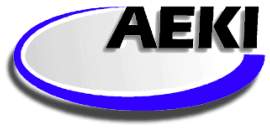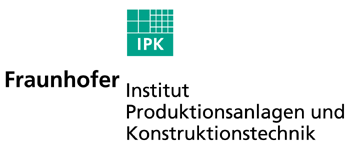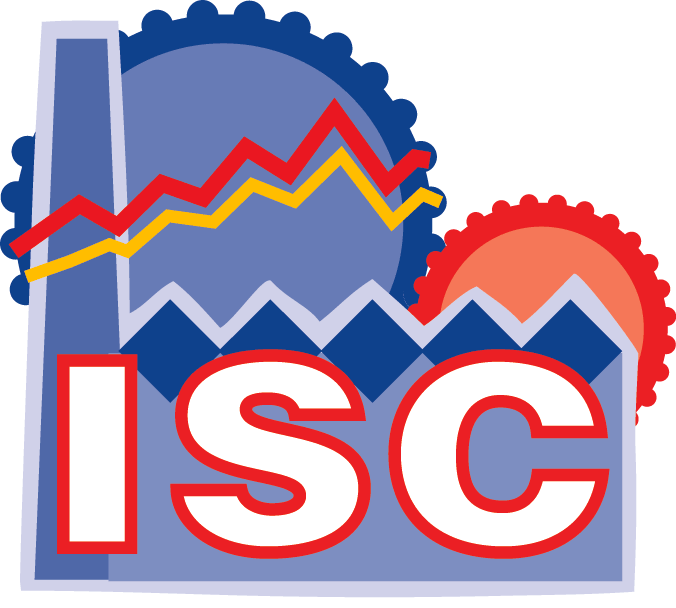Conference Themes (the final programme
can now be downloaded
HERE) (pdf file, 2MB)
Methodology
Modelling
Methodology
Web
Based Simulation, Optimization and Response Surfaces, Parallel and
Distributed Systems, Virtual Worlds, Methods for Special Applications,
Practice, Extensions, XML, Open Source, Model Development, Network
Modeling, Distributed Simulation and Industry, Modeling Very Large Scale
Systems, Aerospace Operations, Revising Simulations Components.
Submit
your abstract/paper proposal for this track
here
Analysis
Methodology
Advanced
Input Modeling, Simulation Optimization, Cross Entropy, Output Analysis,
Input Modeling, Simulation Optimization, Input Analysis, Difficult
Queueing Problems, New Output Analysis.
Submit
your abstract/paper proposal for this
track
here
Discrete
Simulation Languages and Tools
Discrete
simulation languages; Object oriented modeling languages; UML and
simulation; Model libraries and modularity; Component-oriented simulation;
Special simulation tools and environments; Meta-models and automatic model
generation; Graphical simulation environments and simulation software
tools; Intelligent simulation environments; Database management of models
and results; Java and Web enabled simulations, UML and OO Simulation.
Submit
your abstract/paper proposal for this track
here
Application
Areas
The
application section covers: Automation, CAD/CAM/CAE, Defense Electronics,
Design Automation, Simulation in industrial Design, Industrial
Engineering, Industrial and Process Simulation, Manufacturing,
Simulations, Logistics and Transport, Power Plants, Multibody Systems,
Aerospace, etc..
Simulation
in Manufacturing
The
goal of this track is to exchange ideas, experiences, and research results
between practitioners and researchers. It shall offer the opportunity not
only for presenting work done but also for discussing new challenges
emerging in this area. It focuses on innovative applications of simulation
in the field of production and operation management. State-of-the-art
applications covering any part of the value adding chain and any
aggregation level are encouraged. This track will show the efficient
utilization of simulation techniques and hybrid approaches for the
optimization of manufacturing processes.
This
session covers: Computer Assisted Learning and Simulation Trainers,
Customizing of ERP Systems using Simulation, Distributed Simulation
Approaches, Hierarchical Simulation, Integrating Process Mapping and
Simulation, Manufacturing Consulting, Manufacturing Controls, Model
Integration Standards Optimization and Evaluation, Simulation Frameworks,
Simulation of (Manufacturing) Processes in Virtual Enterprises, Virtual
Factories, and Virtual Manufacturing Simulation Support Tools , Web-Based
Workflow Modeling and Simulation , MRP systems; CAD; CAM; CIM; Process
design; Process control; Embedded intelligent control systems;
Scheduling; Automotive simulation; Robotics and automation.
Manufacturing Applications Transportation and Material Handling, Best
Modeling Methods, Integrating Simulation and Design, Manufacturing
Modeling Architectures, Manufacturing Modeling Methods, Simulation of
Manufacturing Operations
Submit
your paper/abstract proposal for this track
here
Simulation
in Automotive Systems
Automotive
simulation of Car Design, car behaviour, vehicle driver interaction,
collision tests, on board diagnostics, vision enhancement and collision
warning systems, vehicle dynamics and simulation, off-road vehicle
design and modelling, engineering propulsion controls simulation, power
train and fluid systems simulation, hydrogen and electric engine
simulation, homogeneous charge compression ignition, emissions control,
brake simulation
Race Car Simulation
Aerodynamics simulation,
Atmosphere simulation, Lift-Drag Simulation, Wind Tunnel Simulation,
Flow Visualization, Computational Fluid Dynamics
Submit
your paper/abstract proposal
for this track
here
 Simulation
in Robotics Simulation
in Robotics
Robot
Systems
Application
of Industrial Robots, Service Robots, Control Technology, Development of
Mechatronic Products, Innovation Management. Sensor Simulation ,
Simulation of Natural Environments Simulation of Agent-Environment
Interaction /Intelligent Agents, Neural Networks and Simulation ,
Simulation of Collective Behaviour and Emergent Phenomena , Simulation of
Learning and Adaptation Processes , Assessment Criteria and Assessment
Methods for Simulators , Quantitative and Qualitative Comparisons between
Originals and their Simulations , Simulation of User-System
Interaction
Submit
your paper/abstract proposal
for this track
here
Robots
in Assembly Systems
Assembly
Systems and Components, Processes Product Development and Design, Wiring
Technology.
Submit your paper/abstract proposal
for this track
here
Robots
in Technical Production Planning
Technical
Production Planning, Device and Equipment Technology, Production processes
and Sequences, Information Technology.
Submit your paper/abstract proposal
for this track
here
Simulation
in Electronics, Computers and Telecommunications
Modeling
and simulation of analogue circuits; Modeling and simulation of digital
circuits at switch and/or at logic level; Hardware accelerators for
circuit-level simulation; Hardware accelerators for logic simulation;
Distributed simulation of circuits, components, and systems; Modeling and
simulation of computer systems; Fault simulation; Parallel and distributed
systems; High-speed networks; Network simulation software; Computer and
telecommunication systems; Telecommunication devices and systems;
Intelligent telecommunication networks; ISDN; ATM communications.
Submit
your paper/abstract proposal
for this track
here
Simulation
in Electronics Manufacturing
 Semiconductor
Manufacturing Simulation Semiconductor
Manufacturing Simulation
Recently, the electronics
industry has become the largest industry in the world. One important
area of this industry is the manufacturing of integrated circuits (IC)
on silicon wafers. Semiconductor wafer fabrication facilities (wafer
fabs) are complex manufacturing systems that contain hundreds of
machines and thousands of lots. Currently, it seems that the improvement
of operational processes creates the best opportunity to realize
necessary cost reductions. Therefore, the development of efficient
planning and control strategies is highly desirable in the semiconductor
domain.
In order to create, implement and
test the required novel strategies, it is necessary to take new
opportunities of information technology into account. Modelling and
Simulation are widely accepted tools in planning and production control in
wafer fabs because they are able to deal with the huge complexity of modern
wafer fabs.
The aim of the session consists in
collecting papers from both industry and academia that deal with interesting
applications and new methodologies in modelling and simulation of
manufacturing systems in the electronics industry.
 Download the Call for Papers for this track
here.
Download the Call for Papers for this track
here.
Submit your paper/abstract proposal
for this track
here
Cleanroom
Manufacturing
Cleanroom
suitability test, microsystem technology, cleaning technology,
manufacturing technology for clean environments, information systems
Submit your paper/abstract proposal
for this track
here
Manufacturing
Technologies, Information Technology
Information
Processing, Metrology and Testing Technology, Production Methods, Rapid
Prototyping
Submit your paper/abstract proposal
for this track
here
Surface
Engineering
Development,
optimisation and modelling of coating processes, integrated process
development and management, production-orientated equipment,
development, integration of coating processes into production, quality
concepts for complex coating processes, surface characterization
Submit
your paper/abstract proposal
for this track
here
Coating
Technology
Simulation
Based Scheduling, Supply Chain Planning Semiconductor Manufacturing,
Maintenance and Repair, Scheduling and Control and Schedule Evaluation
Submit your paper/abstract proposal
for this track
here
 Simulation
in Logistics, Traffic, Transport, Port, Airport and Hospital Logistics Simulation Simulation
in Logistics, Traffic, Transport, Port, Airport and Hospital Logistics Simulation
Factory
and Logistics Planning
Strategies
and Concepts for Production and Logistics, Technical and Organizations
Planning of Production and Logistics Systems, Value Stream Mapping,
Integrated Factory and Logistics Planning, Innovative Planning Methods,
tools and systems.
Submit
your paper/abstract proposal
for this track
here
Logistics
Logistics supply chains, inbound logistics, materials management,
Manufacturing Supply Chain Management, physical distribution, production
planning and control, outbound and inbound logistics, Simulation of
regional logistic systems, distribution centres, inventory management,
warehousing decisions, materials management, handling and packaging,
logistics information systems, information management in logistics
systems, logistics network design and facility location, cost modelling.
Submit your paper/abstract proposal
for this track
here
Traffic
Traffic flows, multi-modal systems, transit, transportation modes, urban
city transport, transportation in logistics, transportation management,
traffic demand, traffic control, traffic telematics, traffic performance,
safety, macroscopic, mesoscopic and microscopic simulations;
Submit your paper/abstract proposal
for this track
here
Port
Simulation
Bulk Terminals, Container Terminals, Harbour Services,
Industrial Facilities, Navigation Lines, Multimodal Transports, Oil
Terminals, Passenger Terminals, Railways, Ro-Ro Terminals, Ships and
Platforms, Supply Chains and Warehouses, Harbour Management, Safety in
Maritime Environments, Vessel Traffic Systems
Submit your paper/abstract proposal
for this track
here
Hospital Logistics
- Decision support systems in medicine (diagnosis, prognosis, therapeutic, treatment
follow-up...) which are based on medical knowledge representation, ontologies
and cooperation of different knowledge sources.
- Organisation of health care units (hospital, ...) which involves management, economics,
law, deontology, ethics, social and information technology aspects...f ex. Patient
waiting
time simulation, Emergency evacuation simulation, Brancardage,
hospital
occupation simulation and optimization
Submit your paper/abstract proposal
for this track
here
Complex
Systems Modelling
Design and Simulation, - Process Control and
Optimization, - Information
Technology Systems, - Space and Airborne Systems - Communication Networks,
- Cybernetics and Control, - Building Engineering and Urban
Infrastructures - Nonlinear Systems) Integration of AI Techniques and
Simulation, Knowledge Elicitation and Representation for Complex Models,
Drawing Understanding and Pattern Recognition, Machine Learning, Neural
Networks and Genetic Algorithms, Simulation in Robotics and Automation,
Continuous Simulation of Technical Processes, Fuzzy Models in Simulation,
Wireless Communication, Mobile Communication Networks, Satellite
Communication, LAN and WAN Protocols, Simulation of Switching Equipment,
Design and Coding of Communication Handling Software
Submit your paper/abstract proposal
for this track
here
Simulation
in Aerospace
Aerospace Simulation
Methodology
Low Cost Simulation Environments,
Rapid Simulation Prototyping, Simulation Based Design, Simulation of
Satellite Navigation, systems (space segment and terrestrial applications)
simulation of satellite constellations, real-time hardware-in-the-loop
nab-in-the-loop simulation, flight simulation, distributed interactive
simulation and HLA standards, Graphical simulation (virtual environments and
virtual reality) applied to aerospace. Modelling and Simulation standards,
rationalisation efforts, repositories and reuse. Simulation in support of
system specification and design, simulation in support of system assembly,
integration and testing. Simulation in support of flight software
validation, structural dynamics of Pylon Store Coupling, Flutter Prediction,
volterra kernels to model nonlinear aeroelasticity
.
Submit your paper/abstract proposal
for this track
here
Aircraft Simulation
Air Systems
Simulation Modelling and Design (Airframe, Wing, Lift Coefficient, Parasitic
Drag, Aircraft Stabilization, Impact Dynamics, Flight Controls, Avionics,
Fit Control, Landing Gear), Control Surface Shaping, Active wing Morphing
Control and Self-repair, Structures technology for future aerospace systems,
Aerospace Vehicle Systems Technology (AVST), Aviation Safety Analysis
Software within the Intelligent Synthesis Environment, Aviation Systems
Capacity, Bio-nanotechnology simulation, Aerospace Propulsion and Power
(Ultra Efficient Engine Technology, Hypersonic Craft Simulation, Ramjet
Simulation, Aerothermoelastic Effects in Hypersonic Vehicles, Micro Air
Vehicles Simulation, Small Aircraft Transportation Systems, Quiet Aircraft
and Noise Reduction Technology, CICT Simulation, Vision-Based Autonomous
Flight, Aircraft-UAV-UCAV networked flight simulation , Stealth and radar
evasion technology, Thrust vectorization simulation.
Applications for
future flight (f.ex.. Super Jumbos, Air-Taxis, All-electric Aircraft,
Scramjets, Flying Wings....)
Submit your paper/abstract proposal
for this track
here
Space Flight
Simulation
Next
generation launchers (f.ex future X-Pathfinder), reusable launch vehicles (RLV),
Aerospace Vehicle Systems, Technology, Payload Launch Simulation, Aerospace
Autonomous Operations, System studies for future space transport
architectures, Rocket propulsion simulation, Space materials and structures,
Aerothermodynamics, launcher health management systems, avionics and
in-flight experimentation. Space Cryo Electronics, Innovative Concepts and
Technologies for lunar exploration (in-situ resource utilization, nuclear
propulsion, habitation, nano-technology, modular architecture
Submit your paper/abstract proposal
for this track
here
Marine Simulation
Simulation in
Ship design, propulsion unit simulation, high speed design, water
turbulence simulation, control of supercavitating underwater vehicles.
Underwater detection systems simulation
Submit
your paper/abstract proposal
for this track
here
Simulation
in Industrial and Product Design
Simulation
of product design; Planning and control; Reconfigurable responsive
computing and process re-engineering; Integrated product and process
modelling; Modelling and simulation in virtual global enterprises;
Simulation based design; Qualitative and fuzzy modelling and simulation in
engineering design; Modal logistics in systems design; Simulation in
support of system specification and design.
Submit your paper/abstract proposal
for this track
here
Simulation
in Engineering Processes
The
Modelling in Engineering Processes track focuses on the application of
simulation in mechanical and structural engineering. Oscillations and
Waves, Stability and Control, Computational Mechanics, Numerical Analysis,
Mathematical Methods in Engineering Sciences, Optimization Advanced
simulation of dynamic systems, Simulation-based design, Qualitative
modelling and simulation in engineering, Fuzzy modelling and simulation,
Evolutionary synthesis and evolutionary methods in design, Rapid
prototyping, CASE systems in engineering design, Modal Logic systems in
design, Simulation in support of system specification and design,
Construction Engineering and Project Management.
Submit your paper/abstract proposal
for this track
here
 Simulation
in Energy and Power Systems
Simulation
in Energy and Power Systems
Simulators:
Real-Time simulation methods, GUI, Advanced modelling tools, Trainees'
performance evaluation, Simulator Projects Simulation Studies: Simulation
during design, Safety and environmental hazard estimation, Production
optimisation. Methodology: Real-time simulation and visualisation tools,
Parallel and distributed simulation.
Submit your paper/abstract proposal
for this track
here
Simulation
in Multibody Systems
General:
FE-Methods and Modelling of Flexible Bodies, Non-holonomic Systems and
Geometrical Concepts in Multibody Dynamics, Numerical Aspects of Multibody
Dynamics , Optimization and Control of Mechanisms , Articulated and
Telescopic Multibody Systems , Air, Land and Sea Multibody Systems
Applications
Multibody Systems in Space: Flexible Body Systems, Orbital
Injection, Satellite Injection, Rendezvous and Docking of Spacecraft,
Simulation of Space Station Construction and Assembly
Submit your paper/abstract proposal
for this track
here
Simulation
in Chemical, Petroleum and Mining Engineering
Simulation
of Chemical Plants, Flow simulation, Plant control systems, network
simulation, geological simulations, drilling simulations, oil transport
simulations, mining simulations.
Submit your paper/abstract proposal
for this track
here
Simulation
in Military and Defense
Simulation and Visualization
(2D and 3D visualization of simulations),
Advanced Concepts and
Requirements (simulation of new concepts, requirements development,
predicted impacts of technology integration, intelligent systems simulation)
Military Entertainment
Convergence (wargaming, serious games)
Research, Development and
Acquisition (Design, development and acquisition for new weapons systems
and equipment, Simulation and Modeling for acquisition, requirements, and
training (SMART), Simulation-based acquisition)
Training, Excercises and
Military Operations (simulation in training, simulator/exercise
Integration and Management, Mission Planning and Rehearsal, Embedded
Training, Assessment
Physical Modelling and Effects
(Lethality, vulnerability and survivability, impact and penetration
modelling, computational fluid and molecular dynamics, structural and solid
mechanics modelling, ballistics and propellant simulation)
Entity and System Modelling
and Behaviours (human performance modelling, entity behaviours, computer
generated forces, agent-based combat modelling)
Domains (sea, Land, Air
and Space (synthetic environments (f ex.DAWARS, JWARS), virtual realities,
surface and sub-surface warfare, unmanned robotic land, sea and aerial
vehicle simulation (UAV, UCAV), avionics, flight control, flight simulation,
simulation and control for spacecraft)
Operations, Command and
Control and Interoperability (battle field, battle theatre simulation,
simulation during operations, CAI simulation, counterforce operations,
airspace management, campaign analysis)
Military Networking
(network modelling and simulation, network centric warfare, information
assurance modelling and simulation, simulations and the Global Information
Grid)
Terrain Recognition and Analysis
Simulation Software, Image Analysis and Image Recognition
Submit your paper/abstract proposal
for this track
here
Virtual Reality and Graphical Simulations in Industrial Applications
Virtual
reality and computer graphics simulations applied to industrial
applications.
Submit your paper/abstract proposal
for this track
here
 Verification,
Validation and Accreditation Verification,
Validation and Accreditation
The
term validation is applied to those processes, which try to determine
whether or not a simulation is correct with respect to the "reality". More
prosaically, validation is concerned with the question "Are we building
the right system?" Verification, on the other hand, seeks to answer
the question "Are we building the system right?" Accreditation
considers efforts to meet use case criteria. Here the question to answer
is "Are the model and the system acceptable for use for a specific
purpose?"
This
track focuses general modelling aspects: model design methods, model
representation forms and languages, model interpretation for verification,
efforts and approaches for validation of model itself and as a part of
simulation system. Application areas may range from archiving and
communication technologies over industrial solutions to scientific systems.
Special attention is paid to formal approaches for verification and
validation. Here, algebraic methods for the model constructing and
generating as well as semantic dependent model interpreting are
considered. In this context, XML-based model specification,
transformation, and interpretation techniques are also significant.
The
track handles VV&A methodology (VV&A planning, confidence levels,
risk estimation, organisation, documentation, standards, cost estimation,
technique application, result presentation, subject matter expert selection,
fidelity, automation potential) as well as VV&A technology
(documentation, CASE-tools, cross checking, requirements specification,
knowledge based systems, configuration management, tool overview, simulation
environments).
Submit your paper/abstract proposal
for this track
here
Simulation
and Training
Motivation
& Objectives
Highly skilled
staff is an essential prerequisite for the safe and effective operation of
industrial production systems. Simulation-based training plays an
increasingly important role in qualification of plant personnel. In specific
sectors such as aerospace or power stations, training simulators have
already been successfully employed for many years. Latest developments in
industrial information technology as well as the introduction of virtual
product and process engineering provide a new technological basis for the
cost-effective implementation of training simulators. Therefore, in near
future the general spread of these technology in a variety of industrial
sectors and applications is expected. Today ´s best practice, latest
developments, and future concepts of simulation-based training in industry
will be presented.
Topics
-
Training simulator technology
-
Scenarios and procedures for
operator training
-
Modelling approaches, tools and
virtual environments for training
-
e-Training in distributed
environments
-
HMI and cognitive performance
-
Certification and
standardisation issues
-
Industrial applications and
best practice
-
Requirements on R&D
Submit your paper/abstract proposal
for this track
here
The
Future of Industrial Simulation: Roundtable
Simulation
Standards, Future of Simulation Software, What's Virtually Possible,
Real-Time Control, Equipment Interface, Supply Chain Opportunities,
Customer Focus, Making Simulation relevant.
Submit your paper/abstract proposal
for this track
here
|
|


|

























